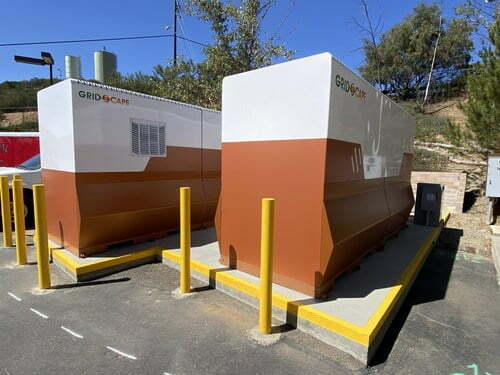
Investor-owned utility SDG&E and the City of San Diego are launching a dozen microgrid projects with energy storage across San Diego, California, following similar announcements elsewhere in the state.
San Diego Gas & Electric (SDG&E) received approval on June 24 from the California Public Utilities Commission (CPUC) to build four microgrid projects at existing substations in the San Diego region, with a combined 39MW/180MWh of energy storage capacity.
The units will help the state of California meet high energy demand, particularly on hot summer days and during peak demand evening hours when solar generation is low. They will be able to operate independently or in parallel with the larger regional grid ensuring critical community facilities remain powered during grid-level outages.
The projects are called Clairemont, Boulevard, Paradise and Elliott and will all have the ability to power a range of public facilities like schools, fire and police stations, post offices and healthcare facilities across the city. They are set to be completed by summer 2023.
Microgrid projects like SDG&E’s stem from governor Gavin Newsom’s proclamation of a State Emergency issued last summer which set out actions to expedite clean energy projects to ensure the state was better-placed for summer 2022 and beyond. This included battery storage systems of 20MW or more with two-hour-plus durations with certain permitting and licensing requirements effectively waived.
“These clean energy projects will help our region become more resilient to the impacts of our worsening climate,” said SDG&E Vice President of Energy Innovation Miguel Romero.
Gridscape and Shell bring in contractor for eight microgrids
On the same day as the CPUC’s approval for SDG&E’s four microgrid projects, the City of San Diego awarded developer and contractor Industria Power a construction contract for eight microgrids. The project developer is Gridscape Solutions, on behalf of the City, while Shell New Energies US will be the asset owner and operator for 25 years.
The City of San Diego prioritised eight building sites, including three recreation centres, two fire stations and three police stations.
Each will get self-contained power systems with onsite renewable energy generation and storage that will also provide backup power for the community during public safety power shut off (PSPS) events or other outages, provide access to EV charging stations and save the City an estimated US$6 million in energy costs over 25 years. It was reported last year that Shell expected to spend US$4 million on the project.
The deployments which will help the city meet its goal of reducing electricity use by 25% from 2010 levels, by enabling dynamic shifting of the facility’s energy load by optimising electricity consumption and demand in response to grid signals and energy pricing.
A press release said the microgrids will include 930kW of solar PV systems. It added that storage component will comprise “2,175MWh of battery storage”, although earlier reports and the disclosed investment sums indicate this is an error and much more likely to be a kWh number. Energy-Storage.news has asked Industria Power’s media contact to confirm this and will update the story in due course.
A microgrid that Gridscape and Industria recently commissioned at the San Pasqual Tribal Hall, just outside the city of San Diego (pictured), combined 156kW of solar PV with 480kWh of battery storage. It appears unrelated to the eight Industria has been awarded by the City of San Diego but gives an idea of the size of system the groups have been deploying.
Gridscape describes itself as a smart energy solutions company and said it plans to deploy and operate over 35 microgrids in California over the next 12 months.
Microgrid projects: a growing trend in The Golden State
Microgrids with energy storage have been deployed elsewhere in California recently for a variety of critical facilities, covered by Energy-Storage.news.
A notable example was a front-of-meter microgrid combining 2.2MW of solar PV with a 9MWh battery went online a few weeks ago in Humboldt County, northeast California. Its developers claimed it is is the first 100% renewable energy, front-of-meter, multi-customer microgrid to go online in the state, and will provide backup power to two airports plus other facilities.
In May, Solano County partnered with Engie North America, part of the French utility, to install four microgrids with solar and storage for a total investment of US$41 million, which will also include 54 EV charging stations. The estimated energy bill offset over 20 years is US$60 million.
The same month, water utility Santa Margarita Water District engaged Scale Microgrid Solutions to install, finance and operate a 1MWh energy storage system at its water and wastewater treatment facilities in the Santa Lucia Mountains. It will pair with an existing 1MW solar PV and enable eight hours of backup power in case of a grid outage.
All customers within the service area of SDG&E’s fellow investor-owned utility PG&E have been eligible to apply for support to install renewable-plus-storage microgrids, as of December 2021.

